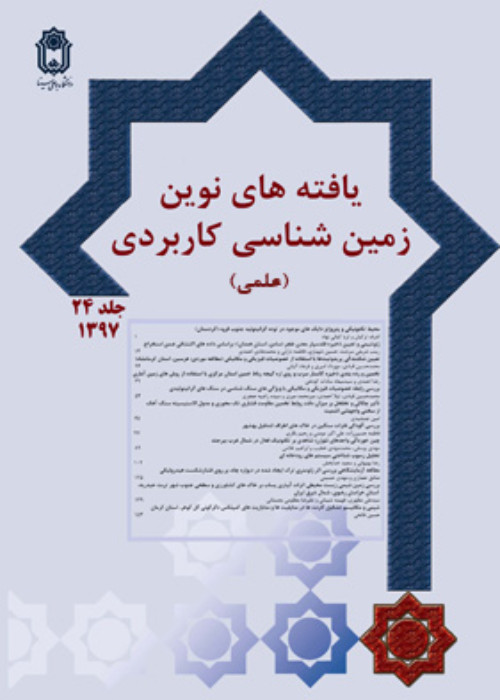Pollution of groundwater resources in the downstream areas of the landfill in Sarabghanbar, Kermanshah
Author(s):
Article Type:
Research/Original Article (دارای رتبه معتبر)
Abstract:
In recent years, groundwater pollution has been raised as an important environmental issue in developed and developing countries due to changing land use patterns. Among the many groundwater pollutants, we can mention the leachate produced from waste or municipal waste landfill, which poses many environmental hazards due to its toxicity and high durability in the environment. Kermanshah is the ninth most populous city and one of the metropolises of Iran, the center of which is Kermanshah and according to the 2016 census has a population of 946,651 people. Due to high population growth and immigration, it has led to an unprecedented increase in population that is not within the capacity of the city's infrastructure. As a result, along with many environmental problems in this city, it faces serious problems in terms of waste collection and disposal because the amount of waste production per citizen of Kermanshah is on average 750 to 900 grams per day, which is twice the global average. This waste is accumulated in the southern part of Kermanshah city and at a distance of about 15 km from it on the northern slope of Kuh-e Sefid. In this study, according to the geomorphological features of the region, the pollution of groundwater resources in the downstream areas of the landfill in Sarabghanbar of Kermanshah (Kermanshah city) has been investigated in GMS software environment and MODFLOW analytical code. In this study, first the geomorphological map of Kermanshah city in order to identify groundwater, soil, and slope and land type has been drawn. This map shows that the uneven erosion plain of the southern half of the city, due to the landfill of Kermanshah, can provide a source of pollution for Sarabghanbar springs. The groundwater level map shows the direction of water flow in this area from south and southeast to the center of the plain and then north and northeast. Landfill construction site, and groundwater flow direction are the main factors in the spread of pollution. Studies show that during the study period, the groundwater level in drought periods is constantly declining and its rate of rise in wet periods is always less than its rate of decline in dry periods. The results of MT3DMS quality model showed that in order to solve the problem of infiltration of landfill pollution in the groundwater network, among the several solutions that can be offered to water resource executives, one is blocking the border power supply of the plain and the other is controlling and preventing excessive drop. Groundwater level.
Keywords:
Language:
Persian
Published:
Journal of New Findings in Applied Geology, Volume:15 Issue: 30, 2022
Pages:
1 to 16
magiran.com/p2412267
دانلود و مطالعه متن این مقاله با یکی از روشهای زیر امکان پذیر است:
اشتراک شخصی
با عضویت و پرداخت آنلاین حق اشتراک یکساله به مبلغ 1,390,000ريال میتوانید 70 عنوان مطلب دانلود کنید!
اشتراک سازمانی
به کتابخانه دانشگاه یا محل کار خود پیشنهاد کنید تا اشتراک سازمانی این پایگاه را برای دسترسی نامحدود همه کاربران به متن مطالب تهیه نمایند!
توجه!
- حق عضویت دریافتی صرف حمایت از نشریات عضو و نگهداری، تکمیل و توسعه مگیران میشود.
- پرداخت حق اشتراک و دانلود مقالات اجازه بازنشر آن در سایر رسانههای چاپی و دیجیتال را به کاربر نمیدهد.
In order to view content subscription is required
Personal subscription
Subscribe magiran.com for 70 € euros via PayPal and download 70 articles during a year.
Organization subscription
Please contact us to subscribe your university or library for unlimited access!




